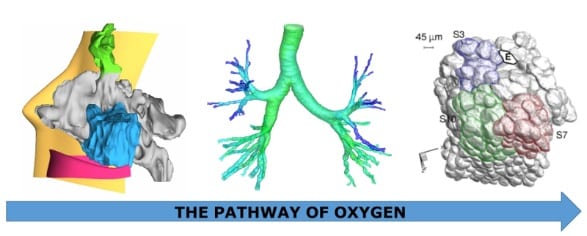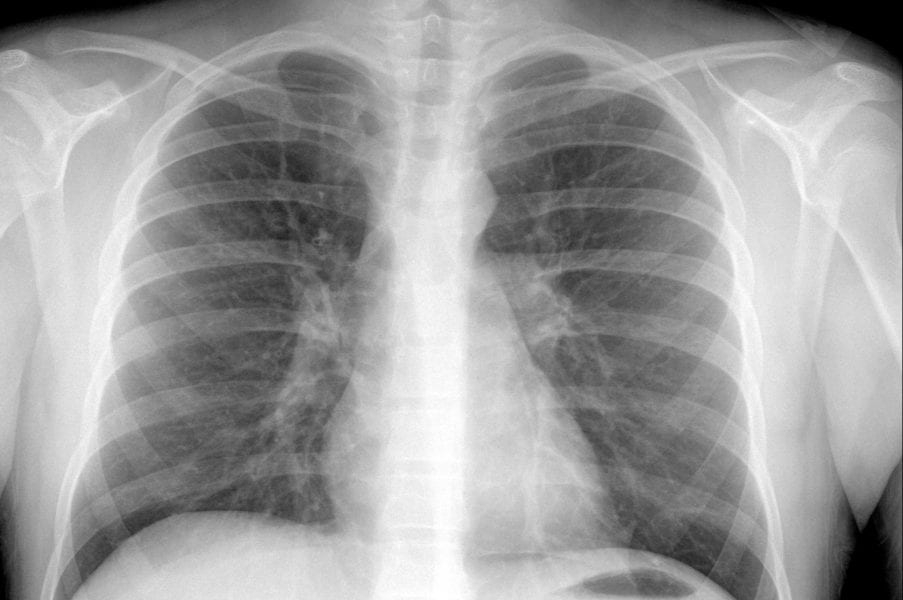Computers have revolutionized many areas of our lives and continue to do so, and the medical field is no exception. There is a drive towards personalized medicine, aiming for treatment tailored to an individual because “one size does not fit all.” Computer modeling and simulation of the human body is one method being used to work towards this so-called personalized medicine.
In our lungs, air and blood are brought together to exchange the gases we need to survive. Air travels through your mouth or nose, down through your airways to the gas exchange region (the alveoli). In certain diseases, the process of air flow into our lungs is damaged. Current methods for diagnosing many lung diseases use a technique known as spirometry. This test measures airflow into and out of your mouth and provides a measure of how well your lung is working as a whole. However, significant damage may already be present before spirometry can detect changes.
 Through the use of powerful computers and well-defined mathematics, it is possible to simulate how air flows into our lungs using a technique called computational fluid dynamics (CFD). People around the world are using this technique to simulate air flow, and the transport of inhaled drugs, through personalized computer models of a patient’s airways. In a recent review in WIREs Systems Biology and Medicine, the authors discuss research conducted around the world focusing on the simulation of airflow through the full pathway for oxygen (nose – airways – alveoli).
Through the use of powerful computers and well-defined mathematics, it is possible to simulate how air flows into our lungs using a technique called computational fluid dynamics (CFD). People around the world are using this technique to simulate air flow, and the transport of inhaled drugs, through personalized computer models of a patient’s airways. In a recent review in WIREs Systems Biology and Medicine, the authors discuss research conducted around the world focusing on the simulation of airflow through the full pathway for oxygen (nose – airways – alveoli).
In particular, this Review presents work using image-based patient-specific models applied in the clinical setting. For example, the authors discuss the application of models of airflow in the nasal cavity to predict air flow changes after nasal surgery. They also describe CFD studies used in drug trials, providing evidence these computer methods can provide an improvement on current measures of lung function like spirometry. Researchers around the world are working towards creating computer models that can ultimately be used to improve medical care.
Contributed by the Authors.

















